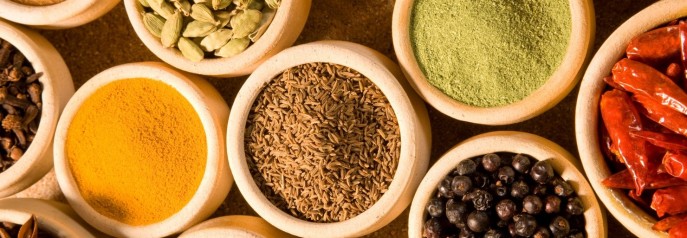BY KITTY FINKLEA (Special to the Morning News)
Here in the South, we love fatback, bacon and plenty of salt in cooking. When working on weight loss and overall health, the most common thought without these seasonings is boring, bland food. But it doesn’t have to be that way.
Herbs and spices are the perfect replacement since they provide a wide variety of amazing flavors, minimal or no calories and a variety of plant nutrients that are beneficial for health. It does take some experimentation to figure out how to use them and what you like.
So what is the difference between an herb and a spice? It varies depending on your source but generally herbs are from leaves of aromatic plants. Examples are parsley, chives, thyme, basil, dill, oregano, rosemary, sage, though these are only a few. Herbs can be grown inside or outdoors and may be used fresh or dried. Dried forms may be whole, crushed, or ground. Spices come from the bark (cinnamon), root (ginger), buds (cloves), seeds (sesame), berry (black pepper), or the fruit (paprika) of tropical plants and trees.
Make sure to store fresh or dried herbs away from moisture, heat and sunlight in an airtight container. Whole herbs and spices last longer than crushed or ground. Give them a smell test about once a year. If they have lost their aroma, they need to be replaced. Some seeds may not have an aroma (mustard and poppy seeds) so go by shelf life. An easy way to keep fresh herbs is to chop them, add to water in an ice cube tray and put it in the freezer.
Storage life of herbs and spices for seasoning:
Whole: 2-5 years
Ground spices: 6 months-2 years
Leafy herbs: 3 months-2 years
If you’re new to cooking with herbs and spices, there are no real rules for the correct amount to use. The pungency and flavor of each is different and the effects on different foods vary. Start with finding recipes that contain herbs and spices. You can always adjust amounts to suit and personalize individual tastes. No recipe available? Start with ¼ tsp of dried herbs or spice for 4 servings, per pound of meat, or for each pint of sauce or soup. Adjust to taste. Add herbs near the end of cooking for more distinct flavor, or at the beginning for more blended flavors.
Spring is a great time of year to think about an herb garden – you can plant herbs in pots or in the ground. Add them around any veggies you already grow. Really easy ones to start with are rosemary, basil, parsley, oregano, mint, and chives. Here are a few food and herb combinations and it’s just a start! Use your imagination and have fun!
Rosemary – Fresh, piney, strong flavor so start lightly in lamb, poultry, potatoes, white beans, bread and fruit salad.
Basil – Versatile, sweet flavor to add at the end of cooking tomato dishes, green or snap beans, squash, pasta and salads.
Parsley – A clean, bright flavor and easy to use in almost anything. A great flavor for almost all vegetables, meats, pasta, soups and stews.
Oregano – Earthy flavor and pairs well with lemon. Beautiful taste in tomato sauces, vegetables, meat, seafood, poultry, Greek salad, sandwiches.
Mint – Can take over your garden. – Great in Thai and Asian dishes as well as teas and beverages, desserts, lamb, fish and salads.
Chives – Delicate onion flavor. Use at end of cooking. Chop finely with scissors. Delicious in potatoes, eggs, seafood and salads.
Read the story at SCNOW.com!

